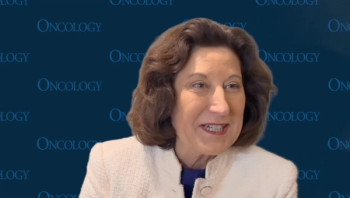
Industry update: Taxotere-based regimen leads to better survival rates in node-positive early disease
Ten-year follow-up results from the BCIRG 001 trial make a case for TAC therapy over FAC. In another study, researchers suggested a link between aromatase inhibitor therapy and breast density.
Taxotere-based regimen leads to better survival rates in node-positive early disease
Ten-year follow-up analysis of the BCIRG 001* trial confirmed that adjuvant TAC* chemotherapy was superior to the FAC* regimen for improving disease-free survival and overall survival in women with node-positive early breast cancer.
In the trial, women with operable node-positive disease were randomized to adjuvant treatment with either TAC or FAC every three weeks for six cycles. Between June 1997 and June 1999, 1,491 women (745 in TAC arm; 746 in FAC arm) from 20 countries were enrolled. Median follow-up was 120 months. The cut-off date for the current analysis was March 2010.
At that time, there were a total of 620 disease-free survival (DFS) events (287 events with TAC; 333 with FAC). The 10-year DFS rates were 62% with TAC and 55% with FAC. TAC improved DFS irrespective of nodal status, hormone receptor status, and HER2/neu status. There have been 429 deaths (188 with TAC; 241 with FAC) and the 10-year overall survival rates were 76% with TAC vs 69% with FAC (SABCS 2010 abstract S4-3).
Taxotere is developed by Sanofi-aventis.
*BCIRG = Breast Cancer International Research Group
*TAC = Docetaxel (Taxotere), doxorubicin, cyclophosphamide
* FAC = 5-fluorouracil, doxorubicin, cyclophosphamideAI therapy may lower breast density in postmenopausal high-risk women
Exemestane (Aromasin) appears to reduce mammographic breast density in high-risk, postmenopausal women, according to a multi-institutional study lead by Jennifer Eng-Wong, MD, MPH, at Lombardi Comprehensive Cancer Center, Georgetown University in Washington, DC.
In this ongoing study, a preliminary analysis was conducted for the first 23 of 42 participants. Mammograms were done before the women began taking exemestane and then one year after treatment. Breast density was compared between the two mammograms. At the one-year mark, mammographic density declined by 7% (P = .0006). The change in mammographic density ranged from 26% to +14% and the standard deviation was 9%. Finally, the density did not different between film-screen mammograms and digital mammograms (SABCS 2010 abstract P1-07-03).
Newsletter
Stay up to date on recent advances in the multidisciplinary approach to cancer.

















































































